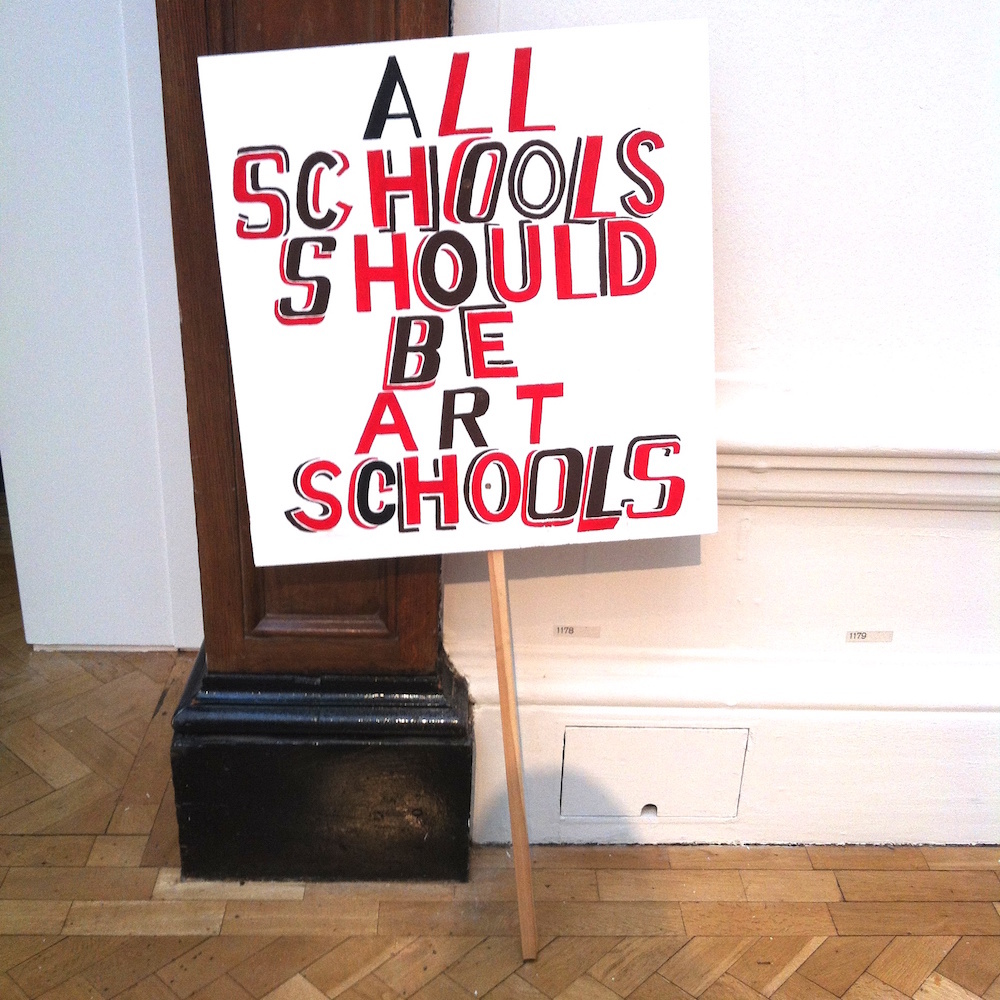Numbers don’t lie, and when viewed through the right lens they can show you many (sometimes uncomfortable) things about the world you live in.
Above image: Bob and Roberta Smith’s All Schools Should be Art Schools poster
Ben Davis and Caroline Elbaor over at ArtNet recently crunched some numbers in an attempt to answer the question: What’s the value of getting an MFA? They made a list of the 500 most successful American artists at auction over the last 50 years. Auction prices from this chunk of data range from the very modest (about $13,000) to the nearly obscene ($184 million). Then they determined if each artist went to grad school and which grad school. They go into more detail on their methodology here.
We can’t really split the results up into tidy “good news” vs. “bad news” categories. If you’re more of a DIY (read: won’t touch student debt with a ten foot pole) mindset, you’ll be happy to know that:
There is hope for those who hate school: Despite the widespread perception that contemporary art is dominated by an MFA mafia, nearly half of the figures on our list of 500 successful early-career artists either did not have an MFA, or didn’t study art academically at all.
Overall, some 35 percent of artists here have no MFA—and another 12 percent have no degree in art, period. (For our purpose, we counted artists who attended a school but didn’t finish as “self-taught.”)
The researchers went ahead and removed some of the largest celebrity artists from the list and noted that the “no MFA” category shrank a bit, but it still made up a whopping 42 percent of the pie.
Of those who did go to an MFA program, they were most likely to be successful if they went to Yale, which we imagine is a tall order for most people. From ArtNet:
Over this 50-year period, Yale’s Graduate School of Art has pumped out nearly 10 percent of all our successful artists.
Indeed, if you look at the distribution of schools on the list, it follows what statisticians call a “power law”—it has a tall head and a long tail. As one blog on the concept explains, “power law” distributions are ones in which “a small number of outcomes have dramatically higher values than the remaining population.”
Yale’s weight in this Top 500 is already more than its next two competitors, UCLA and Columbia, combined. Looking just at the MFA-trained artists on this list, a full 17 percent went to Yale.
We strongly recommend that you read Elbaor and Davis’ full report over at ArtNet. We’ll also urge any of our readers looking to get into the game to relax. Remember: this is a segment of 500 people and doesn’t cover all of the opportunities available in the creative fields (Hi Mom! I’m still employed).
Bill Rodgers is the Managing Editor of cfile.daily.
What do you think of this news from the world of contemporary ceramic art? Let us know in the comments.




well assuming that sales equals a successful artist as opposed to some sense of actual artistic skill or merit is a problem. Young van gogh for instance would be a failed artist. Would you stand behind that idea? If commerce is the mark of success the transcendant consciousness and skill that art making can develop is discounted and finally selected against